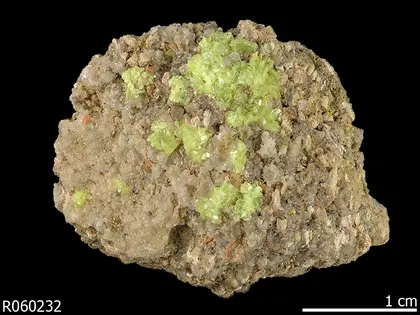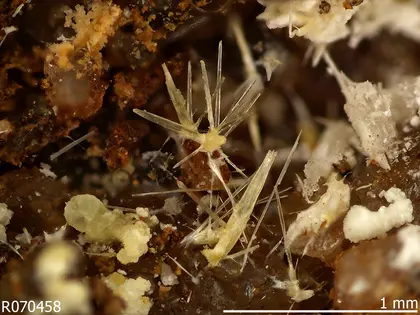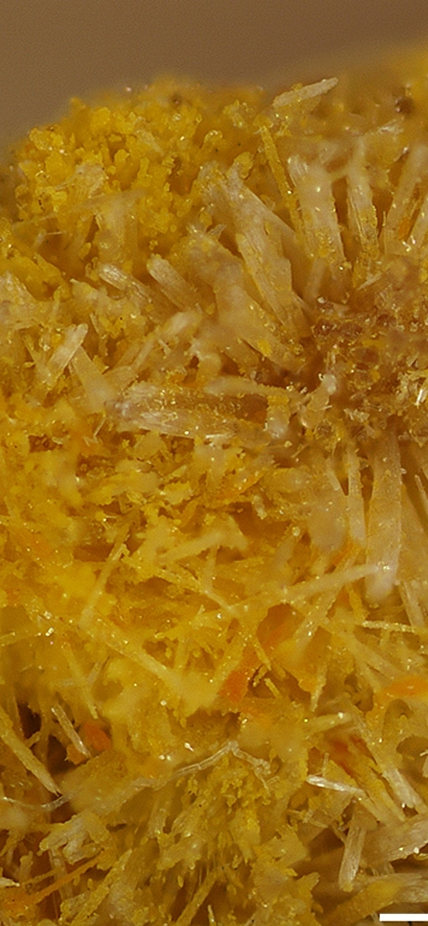Washington, DC—Carnegie scientists predicted the locations of as-yet-unknown mineral deposits on Earth and Mars by developing a groundbreaking machine learning tool that embraces the "inherent messiness" of Earth's intertwined geological, biological, and chemical systems.

“Minerals contain a record of every process that shaped their existence since the beginning of time,” explained lead author Shaunna Morrison. “Not only do minerals demonstrate how our planet—and quite possibly life—came to be, but minerals are also the driver of technological advancement, including green technology. Our work enables scientists and engineers alike to gain insights about useful and information-rich minerals that were previously out of reach.”
Historically, mineral discoveries were the result of extensive fieldwork and laboratory experiments—which is time consuming, expensive, and often depends on serendipity. Instead, mineralogist Morrison, data scientist Anirudh Prabhu, and colleagues, including Carnegie’s Robert Hazen, developed and applied a machine learning method to predict new and valuable mineral occurrences on Earth. Their work resulted in the discovery of new rare earth element and lithium mineral occurrences and could be used to locate ore deposits in the future.
Their findings, recently published in PNAS Nexus, not only reveal the likelihood of the existence of economically important mineral deposits but offer insight into the dynamic interactions that have shaped Earth’s geologic history. Their system can even be used to elucidate the mineralogy of other planets!
The researchers developed a novel machine learning method called mineral association analysis. They accomplished this by deploying association rule learning—which reveals the relationships between variables in a large data set—on mineralogical databases, called Mindat and the Mineral Evolution Database, which incorporate 295,583 localities, 45,472 of which have a known age, and represent 5,478 mineral species.
Their mineral informatics system, which learns as it analyzes large quantities of data, enabled Morrison, Prabhu, and their colleagues to reveal relationships among these species across both geographic regions and geologic time and to create rules governing these connections.
“Our work uses an unsupervised machine learning method to identify key mineral relationships. Association rules learning—a fundamental data science approach that reveals patterns and correlations— forms the backbone of the predictions and discoveries we were able to achieve,” said Prabhu. “Our model is capable of probing the databases to answer questions about the known mineral inventory at a particular location, other locations where a mineral is likely to be discovered, and which groups of minerals correspond to specific environments.”
Using their tool, the researchers successfully identified new locations of uranium-containing minerals and critical rare earth element minerals. They also conducted a mineral inventory of California’s Tecopa Basin, which is often used by scientists as a stand in for Mars.

Looking ahead, the tools Morrison and her colleagues developed will have tremendous economic value, considering the importance of raw minerals for many technological breakthroughs. It can also advance discovery science by enabling researchers to better recognize and articulate the ancient records of our Solar System’s formation and evolution that are encoded in mineral samples.
“This work successfully demonstrates that mineral association analysis is a predictive method that will enhance our understanding of mineralogy on Earth, across our Solar System, and through deep time,” Morrison concluded.
Added Prabhu: “As with any such innovation, we are looking to improve and extend these methods to better understand the evolution of the geosphere and biosphere.”
Other co-authors on the paper include Ahmed Eleish and Peter Fox of Rensselaer Polytechnic Institute, Joshua J. Golden and Robert T. Downs of the University of Arizona, Samuel Perry and Peter C. Burns of the University of Notre Dame, and Jolyon Ralph of Mindat.org.
Acknowledgments
Funding for this project was provided by the Carnegie Institution for Science, the 4D Initiative, the Alfred P. Sloan Foundation, the W. M. Keck Foundation via the Deep Time Data Infrastructure project, a private foundation, and the NASA Astrobiology Institute (Cycle 8), ENIGMA: Evolution of Nanomachines In Geospheres and Microbial Ancestors.
